A gatekeeper sympathetic control of lacrimal tear secretion and dry eye onset through the NA-Adra1a-Ucp2 pathway
- PMID: 40473608
- PMCID: PMC12141490
- DOI: 10.1038/s41467-025-60476-z
A gatekeeper sympathetic control of lacrimal tear secretion and dry eye onset through the NA-Adra1a-Ucp2 pathway
Abstract
Tear secretion from the lacrimal gland is essential for maintaining ocular surface homeostasis, and its insufficiency causes aqueous-deficient dry eye. Unlike the well-established parasympathetic neuronal regulation, the role of sympathetic nervous system (SNS) in tear secretion remains controversial. Here, we demonstrate the intact sympathetic innervation in lacrimal gland and its activation under multiple dry eye stresses. Pharmacological, surgical, and genetic blockade of SNS increases tear secretion and alleviates dry eye signs. Mechanistically, SNS-driven noradrenaline (NA) release activates α1a-adrenergic receptor (Adra1a) in acinar and myoepithelial cells to regulate mitochondrial Ucp2 and tear secretion. Systemic and local delivery of Adra1a antagonists, including silodosin and tamsulosin, improves tear secretion and reduces corneal lesions in multiple dry eye mouse models. In addition, we identify the brain locus coeruleus as an upstream driver orchestrating sympathetic regulation of lacrimal secretion. Overall, these findings reveal a gatekeeper role of SNS in tear secretion and offer potential therapeutic strategies for dry eye disease.
© 2025. The Author(s).
Conflict of interest statement
Competing interests: A Chinese patent (ZL202210497086.8) has been granted to Eye Institute of Shandong First Medical University (Shandong Eye Institute, Qingdao Eye Hospital of Shandong First Medical University), with inventors Lixin Xie, Qingjun Zhou, Mingli Qu, and Sai Zhang. It covers the use of sympathetic activation inhibitors and/or α1-adrenergic receptor antagonists for treating dry eye. A related PCT application (PCT/CN2022/113244) is under examination. All other authors declare no competing interests.
Figures
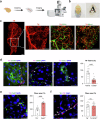

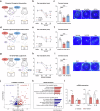
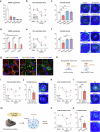
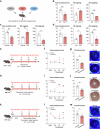
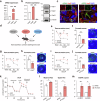



Similar articles
-
Activation of Sympathetic Nervous System Drives Dry Eye Onset Via Norepinephrine-β2-Adrenergic Receptor Signaling in Mice.Invest Ophthalmol Vis Sci. 2025 Jun 2;66(6):13. doi: 10.1167/iovs.66.6.13. Invest Ophthalmol Vis Sci. 2025. PMID: 40465266 Free PMC article.
-
Phenylephrine increases tear cathepsin S secretion in healthy murine lacrimal gland acinar cells through an alternative secretory pathway.Exp Eye Res. 2021 Oct;211:108760. doi: 10.1016/j.exer.2021.108760. Epub 2021 Sep 3. Exp Eye Res. 2021. PMID: 34487726 Free PMC article.
-
A PEDF peptide mimetic effectively relieves dry eye in a diabetic murine model by restoring corneal nerve, barrier, and lacrimal gland function.Ocul Surf. 2024 Apr;32:1-12. doi: 10.1016/j.jtos.2023.12.002. Epub 2023 Dec 14. Ocul Surf. 2024. PMID: 38103731
-
Is the main lacrimal gland indispensable? Contributions of the corneal and conjunctival epithelia.Surv Ophthalmol. 2016 Sep-Oct;61(5):616-27. doi: 10.1016/j.survophthal.2016.02.006. Epub 2016 Mar 9. Surv Ophthalmol. 2016. PMID: 26968256 Review.
-
Neural regulation of lacrimal gland secretory processes: relevance in dry eye diseases.Prog Retin Eye Res. 2009 May;28(3):155-77. doi: 10.1016/j.preteyeres.2009.04.003. Epub 2009 Apr 17. Prog Retin Eye Res. 2009. PMID: 19376264 Free PMC article. Review.
References
MeSH terms
Substances
LinkOut - more resources
Full Text Sources
Medical

